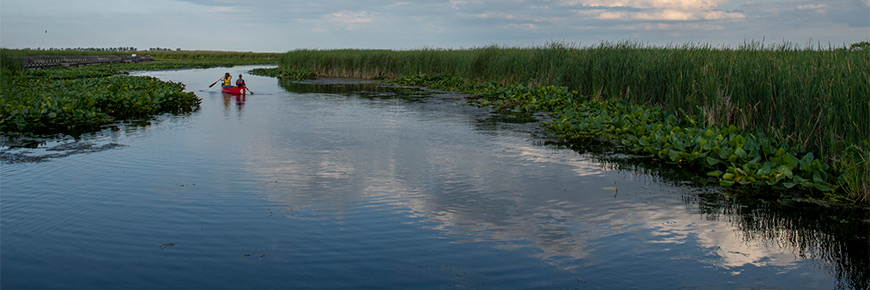
The marsh at Point Pelee National Park
Point Pelee National Park
The marsh at Point Pelee National Park is one of the largest remaining marshes in southern Ontario and one of the few large marshes left in the Great Lakes system. It is also a designated Ramsar Wetland of International Significance due to its unique features and role in conserving biological diversity. At 1,000 hectares (or 2,000 football fields), it is the largest habitat of Canada’s second smallest national park, covering two thirds of the park’s entire area.
Wetlands are known for their remarkable biodiversity, and the marsh at Point Pelee is no exception. It provides food and habitat for songbirds, water birds, snakes, frogs, turtles, fish, plants, insects, and mammals. The marsh supports 19 species at risk and is a critical stop-over for migratory birds, which rely on the chance to forage for food in the marsh after a long flight.
The marsh does not only offer opportunities to wildlife. Visitors to the marsh can immerse themselves in another world - one of croaking frog choruses, stealthy herons, lily pad blossoms, and basking turtles. Whether walking the boardwalk, climbing the marsh tower, or canoeing through ponds and channels, the marsh has a magical way of drawing each visitor into its web of life.
Taking on invasive species in a rare marsh habitat | Field Notes | Parks Canada
- Date modified :



